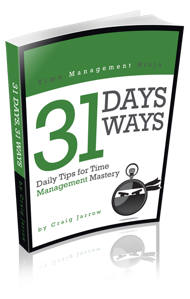 Are your meetings unmanageable?
Are your meetings unmanageable?
Often, it is because the meeting size is too large. Or perhaps, you have invited the wrong group of people.
Inviting too many people is a common meeting mistake that results in confusion, inaction, and wasted time.
How many people should you invite to your meeting?
The 42 Person Meeting
I recently was invited to a meeting that had too many people.
How did I know that?
Well, there were 42 people invited to this particular meeting. Yes, forty-two.
Besides the fact that there wasn’t a conference room big enough for that many people, it was simply too many to have a conversation of any order.
It resulted in chaos. People were in multiple rooms (in the same building). Others were dialed into the meeting (again in the same building).
Conversation was cluttered because most people couldn’t contribute without “stepping on” someone else. Many of the attendees simply put their phones on mute and did nothing.
It was not the most effective use of anyone’s time. In fact, that is a lot of people’s time to waste.
Too Many People for a Meeting
Why do people invite too many attendees to meetings?
Some do it because they are too lazy to determine the right people to invite. Others do it because they think it makes them look important.
Both are mis-guided efforts because once you have more than a handful of people in a meeting it becomes unmanageable.
‘If your meeting has more people than you can count on both hands, it has too many.’
I recommend that you cut your attendee list in half for any serious conversation. No more than 5–6 people in a room.
Here are 7 Tips to Keep Your Meetings to a Manageable Size:
- Invite the Right People – Make sure you are inviting the individuals who can actually act, decide, or impact the issue at hand. You don’t need delegates, substitutes, or alternates.
- Only Those Needed – Resist inviting “extra cast members.” Before sending a meeting invite, review the attendee list and see who can be removed.
- No Duplicates – You don’t need 2–3 people from the same team. This only serves to duplicate effort and unnecessarily tie up resources.
- No Observers – If someone isn’t an active engaged, then they don’t need to be in the meeting. Adhere to a strict “no observers” rule. Participants only.
- No Working in the Meeting – Don’t let people work in the meeting. If they are clicking away on their laptop or phone, they aren’t adding any value to the discussion anyway.
- Have a Conversation – Some meetings shouldn’t even be meetings in the first place. Before scheduling a large meeting, ask if the issue could be addressed by going to see someone and having a conversation. Many meetings would never need to take place if there was better direct communication.
- Follow the “Rule of Five” – Counting on your hands works well for meeting limits. Five people for small conversations or decision-making. Ten people for large brainstorming or development sessions.
Have Smaller Meetings
If you are feeling overwhelmed by your meetings, try reducing the number of attendees.
Low attendee meetings are the most productive. When you schedule your next meeting, make sure you limit the size to the minimum number of people who are essential to the topic at hand.
Small groups make decisions, take action, and deliver results. Isn’t that the purpose of your meeting?
Question: How many people do you invite to your meetings? You can leave a comment by clicking here. I am the author of Time Management Ninja and help individuals and companies reclaim their time to be more productive. As well, I am the author of the book
I am the author of Time Management Ninja and help individuals and companies reclaim their time to be more productive. As well, I am the author of the book 

As a leader it is important to keep opportunity costs in mind. This relates to duplication of team members in attendance. By having members attend your meetings you are taking them away from other tasks. Moreover, meeting attendance disrupts workflow resulting in less efficiency and productivity. Ask yourself if the meeting topic could be addressed in another manner that would allow others to participate in a more timely manner.
Small groups a productivity technique for gaining input from everyone in the meeting.
Blocking the calendar, assigning the tasks, a quick purpose definition, required documentation and more can be done using a scheduling tool to make the meeting purpose much more effective.